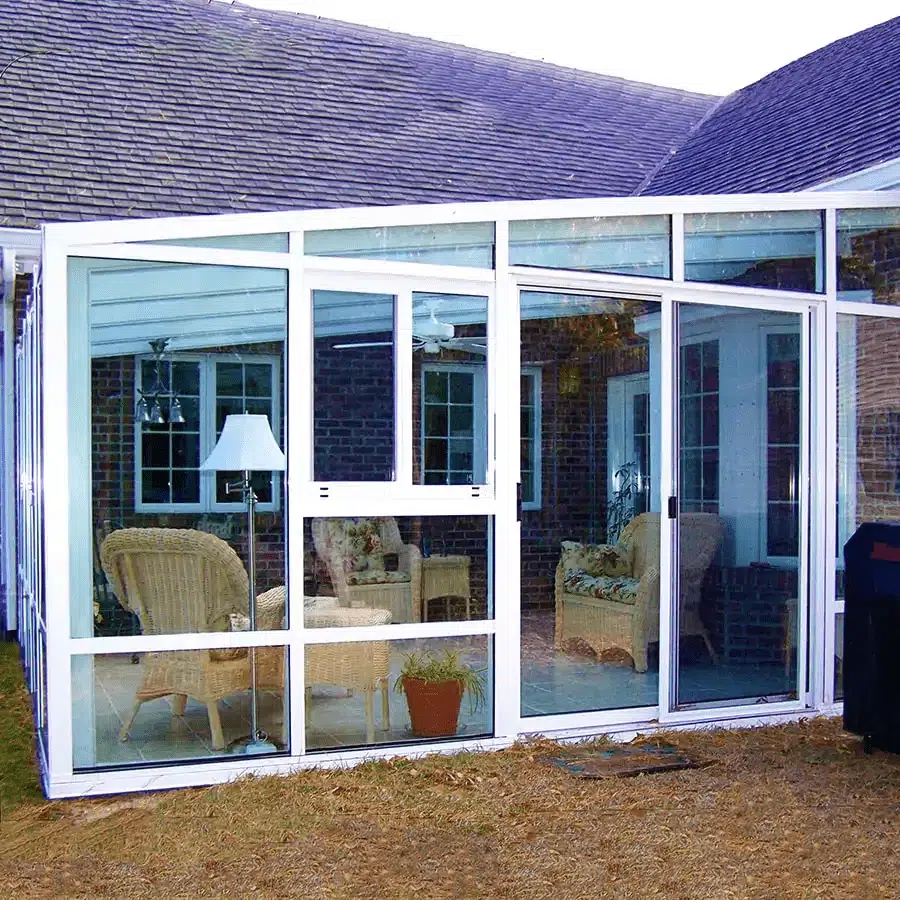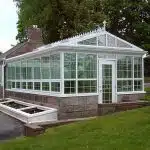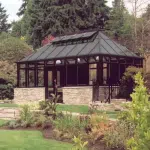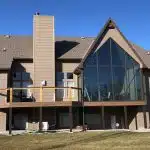If you’re dreaming of a sun-filled space where you can enjoy nature year-round, you’re probably wondering: what’s this going to cost? A solarium is a significant investment, and understanding the numbers upfront helps you plan confidently and avoid surprises down the road. A solarium addition is a type of home addition that features glass walls and roofing, and it can be compared to other home addition projects in terms of complexity, integration with your existing house, and overall cost.
The short answer? Most homeowners invest between $30,000 and $75,000 for a professionally built solarium, with luxury custom designs reaching $100,000 or more. These figures represent the total sunroom addition cost, but sunroom addition costs can vary widely depending on your choices and circumstances.
Let’s break down what influences these costs and what you can expect when building your dream solarium. Factors such as size, materials, and location all play a role in determining your sunroom addition cost and overall sunroom cost, so homeowners should be aware of these terms when planning their project.
By the end of this article, you’ll understand what goes into the cost of a solarium, how it compares to other sunroom options, and how a solarium can impact the value and function of your house.

What Affects Solarium Costs?
Size Matters Most
The single biggest factor in your solarium cost is square footage. Here’s a general breakdown:
- Small solarium (100-150 sq ft): $20,000-$35,000
- Medium solarium (150-250 sq ft): $35,000-$60,000
- Large solarium (250-400 sq ft): $60,000-$100,000+
A small breakfast nook solarium runs significantly less than a full family room addition. Consider how you’ll use the space—do you need enough room for dining furniture, lounge seating, or even a home office setup?
Materials and Construction Quality
Not all solariums are created equal. The materials you select dramatically impact both upfront costs and long-term performance:
- Glass vs. Polycarbonate Panels: High-performance glass with low-E coatings costs more than standard polycarbonate but provides superior insulation and clarity. For four-season comfort in cold climates like Chicago or Kansas City, this upgrade is worth every penny.
- Frame Materials: Aluminum frames are budget-friendly and low-maintenance. Wood frames offer classic beauty but require more upkeep. Vinyl strikes a middle ground. Engineered composite materials, while pricier, deliver exceptional durability and energy efficiency.
- Foundation and Integration: A solarium built on an existing deck costs less than one requiring a new foundation. If you’re integrating your solarium into your home’s existing structure—tying into rooflines and matching architectural details—expect additional engineering and construction costs.
Customization and Features
Standard models from reputable manufacturers offer excellent value, but custom designs command premium pricing. Custom elements that increase costs include:
- Unique shapes or curved glass
- Skylights or cathedral ceilings
- Built-in ventilation systems
- Automated shades or climate control
- French doors or specialty entry points
- Custom colors to match your home
If your home has a distinctive architectural style, working with a manufacturer that specializes in custom designs ensures your solarium enhances rather than clashes with your existing aesthetic.
Four-Season Solariums: Worth the Extra Investment?
If you live in a region with cold winters, a four-season solarium isn’t just a luxury—it’s essential for year-round enjoyment. The cost difference between a three-season and four-season solarium typically adds $5,000-$15,000, but consider what you’re getting. When comparing a three-season solarium to a four season room (also called a four season rooms or season room), it’s important to note the added features and comfort that make a true four-season space usable in any climate:
- Superior Insulation: Double or triple-pane glass with argon fills and thermal breaks, along with high-quality sunroom windows, windows, and glass windows, keep your space comfortable even when temperatures plunge. You won’t be staring at a beautiful but unusable room for six months of the year.
- Climate Control Integration: Four-season designs allow you to extend your HVAC system into the space, maintaining consistent temperatures without sky-high energy bills. Many homeowners choose to install heating, air conditioning, or other systems to provide both heat and cooling for true year-round use.
- Structural Integrity: Engineered to withstand heavy snow loads and extreme temperature fluctuations, four-season solariums are built to last decades, not just seasons.
For homeowners in northern climates, the ability to enjoy your solarium on a snowy February morning—coffee in hand, natural light flooding in—makes the investment worthwhile. Keep in mind, however, that adding a four-season solarium may increase your property taxes due to the added square footage and value.
Whether you’re looking to expand your living space or boost your home’s resale value, sunrooms offer year-round enjoyment and can significantly increase your home’s appeal and value.
Hidden Costs to Budget For
Beyond the base construction costs, factor in these additional expenses:
- Permits and Inspections: Depending on your location, expect $500-$2,000 for building permits and required inspections.
- Site Preparation: Removing an existing deck, grading, or installing proper drainage can add $2,000-$5,000.
- Electrical and HVAC: Running power for lighting and outlets, plus extending heating and cooling, typically costs $1,500-$4,000.
- Furnishings and Finishing: Budget for furniture, window treatments, and décor to make your solarium truly livable.
- Ongoing Maintenance: While quality solariums require minimal upkeep, budget for occasional cleaning, seal maintenance, and potential glass replacement over time.
Is a Solarium Worth the Investment?
From a purely financial standpoint, a well-designed solarium can recoup 50-80% of its cost in home value—but most homeowners will tell you the real return is in quality of life. Imagine:
- Bright, naturally lit space that combats those long winter blues
- A connection to your garden and outdoor views regardless of weather
- Additional living space without the full cost of a traditional room addition
- A unique architectural feature that sets your home apart
For families who value natural light, nature connection, and distinctive home features, a solarium delivers immeasurable daily enjoyment.
DIY vs. Hiring a Professional: Which Is Right for You?
When planning your sunroom construction, one of the first big decisions is whether to take the DIY route or bring in a professional sunroom contractor. While building a sunroom yourself can seem like an affordable option—potentially saving on labor costs and giving you more control over the project—there are important factors to weigh before picking up your toolbox.
DIY sunroom projects, especially those using prefabricated sunroom kits, can help you save money on the total cost. These kits are designed for easier assembly and may be suitable if you’re adding a simple three season sunroom or screen room to an existing deck or patio. However, even with a kit, sunroom construction involves more than just assembling walls and a roof. You’ll need to ensure the structure is properly anchored, weatherproofed, and meets local building codes. Mistakes in these areas can lead to higher costs down the road, from water damage to failed inspections.
On the other hand, hiring a professional sunroom contractor brings peace of mind. Experienced contractors handle everything from site preparation and foundation work to electrical connections and HVAC integration, ensuring your sunroom addition is structurally sound and energy efficient. They’re also familiar with building code requirements and can secure the necessary permits, reducing the risk of costly delays or compliance issues. Plus, professional installation often comes with warranties on both materials and labor, protecting your investment for years to come.
If your vision includes a four season sunroom, complex glass walls, or integrating the new space seamlessly with your home’s existing structure, professional expertise is especially valuable. For homeowners with construction experience and a straightforward project, a DIY approach might be feasible—but for most, the higher costs of hiring a pro are offset by the quality, safety, and long-term value they deliver.
Ultimately, the right choice depends on your budget, skill level, and the complexity of your sunroom addition. Weigh the potential savings against the risks and responsibilities, and don’t hesitate to consult with a reputable sunroom contractor to explore your options before making a final decision.
Getting Started with Your Solarium Project
The best solarium for your home balances your vision, budget, and practical needs. Working with an experienced manufacturer who offers both standard models and custom capabilities gives you flexibility—you can choose a proven design or create something uniquely yours.
Before contacting contractors, consider:
- How you’ll use the space (dining, relaxing, office, entertaining)
- Whether you need four-season comfort
- Your home’s architectural style
- Your timeline and budget range
Ready to explore your options? At Sunshine Rooms, we’ve been designing and building custom solariums for homeowners who value quality, craftsmanship, and four-season comfort.
With over 200 standard models and full custom design capabilities, we’ll help you create a space that fits your vision and budget.
Contact us for a free consultation and let’s start planning your dream solarium today.
Related Posts
We Like to Hear From You!
We service and support the products we manufacture and install. If you need assistance with
our products or those of another sunroom manufacturer, contact us!





